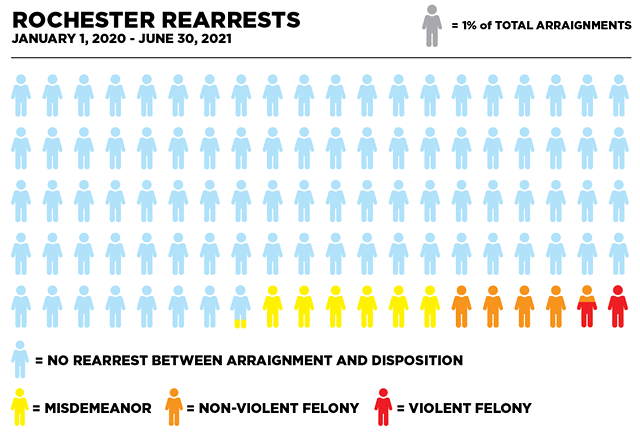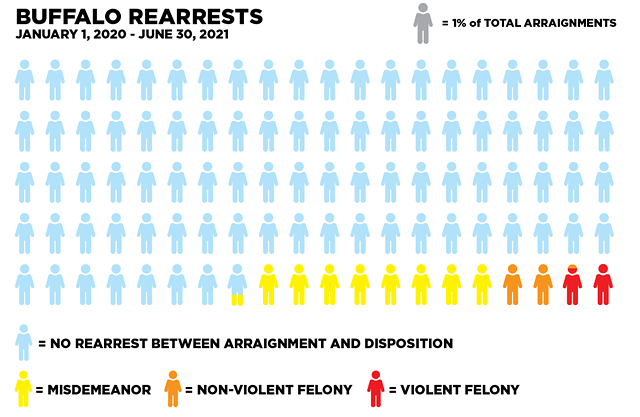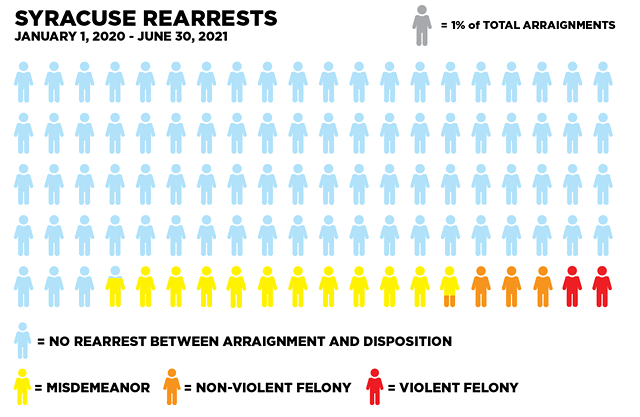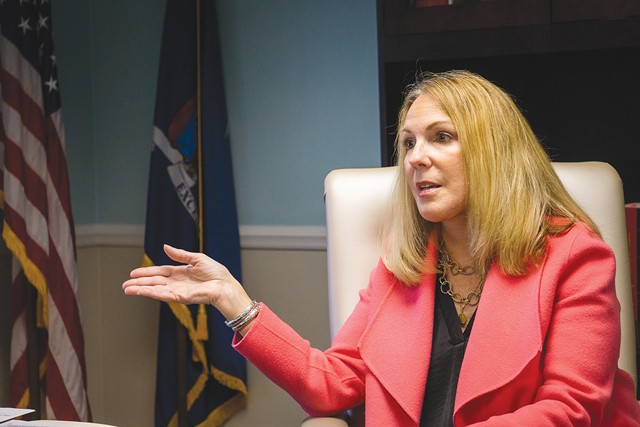click to enlarge
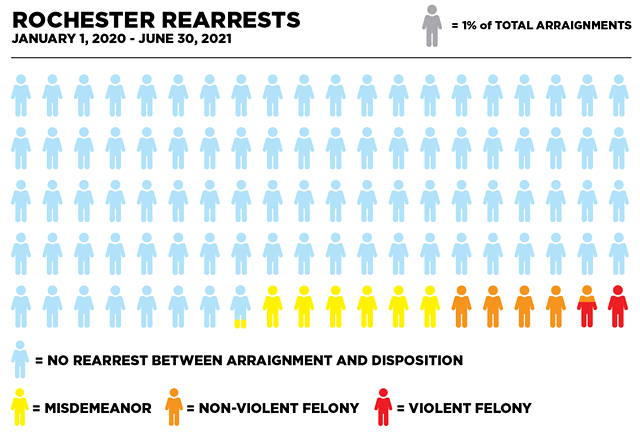

ILLUSTRATION BY RYAN WILLIAMSON
About two percent of people awaiting trial in Rochester were arrested on a violent felony between Jan. 1, 2020 and June 30, 2021.
[
{
"name": "500x250 Ad",
"insertPoint": "5",
"component": "15667920",
"parentWrapperClass": "",
"requiredCountToDisplay": "1"
}
]
Tyquan Rivera was already a notorious criminal when he was arrested in December 2019 on a felony charge of selling fentanyl to undercover officers.
He had been released from prison only eight months earlier after serving a 10-year stretch for shooting Rochester Police Officer Anthony DiPonzio in the head as a 14-year-old boy.
Given that history, a judge ordered Rivera be held in Monroe County Jail on $25,000 cash bail. But two weeks later, Rivera, then 25, was released under a controversial new law that eliminated bail for most misdemeanor and non-violent felonies.
To critics of the law, Rivera’s release only meant he would be free to reoffend while awaiting trial. Their worst fears were confirmed 18 months later, in June 2021, when Rivera was arrested on allegations that he strangled his girlfriend and violated an order of protection.
This time, he was held on $40,000 bail and was subsequently convicted on the drug charge while in jail. He is now serving a 15-year sentence in state prison.
Rivera’s case and those of other known criminals accused of committing crimes while free and awaiting trial on other charges have been highlighted by critics of the law as examples of the perils of ending cash bail.
But a CITY/WXXI News examination of state Office of Court Administration data on every criminal case to go through Rochester City Court since the law began suggests situations like Rivera’s are outliers.
Between Jan. 1, 2020, when the law took effect, and June 30, 2021, the latest date for which data was available, 1,035 of the 8,492 criminal defendants who were arraigned in Rochester City Court — or roughly 12 percent — were arrested on new charges while awaiting trial.
Of the 1,035 people who were arrested anew, 136 of them — or 1.6 percent of the total — were arrested on violent felonies. “There are always repeat offenders that pick up additional offenses while they have other charges pending,” said John Bradley, assistant public defender with the Monroe County Public Defender’s Office. “What isn’t getting talked about much is what would have been different under the bail statute?”
The state data does not — and cannot — show how many of those defendants would have been ordered held on bail and how many of them might have posted bail.
BAIL REFORM AND DATA
What is commonly referred to as “bail reform” is formally The Bail Elimination Act of 2019. The new law specified a list of offenses on which judges could set bail, but also included a list of mostly non-violent offenses that were no longer eligible for bail.
For the latter offenses, judges are required, with some exceptions, to set release terms that do not involve money. Judges can take two paths in these cases. They can release defendants without conditions except that they return for their next court dates, or they can release defendants on what are known as “non-monetary conditions,” such as wearing an ankle monitor or adhering to an order of protection.
The Bail Elimination Act also required courts to start compiling data on arraignments and release conditions. Most courts, including Rochester, had not done that before, making it impossible to compare and contrast post-bail reform data. But Rochester’s post-bail reform data can be compared with that of other upstate cities. On the whole, the percentage of criminal defendants arrested while free without bail are comparable with other cities. For instance, of the 11,672 defendants arraigned in Buffalo City Court, 12 percent were arrested on new charges while their previous cases were pending. Roughly 2 percent of those arraigned were arrested on a violent felony.
Of the 8,080 people arraigned in Syracuse City Court, 16.7 percent were arrested before their cases concluded. Again, roughly 2 percent were arrested on violent felony charges.
The Monroe County District Attorney’s Office is in the process of collecting its own data to better understand the effects, if any, of bail reform.
“There’s so much anecdotal information out there,” District Attorney Sandra Doorley said. “That’s why I haven’t really been speaking on it, because I haven’t gotten the hard data yet.”
She sat at a large hardwood desk in her office on North Fitzhugh Street piled high with files. After looking over the Office of Court Administration data, Doorley said it seemed in line with what she’s seeing in the courtroom, with one exception: the percentage of defendants for whom bench warrants were issued because they never showed up for a follow-up court date.
The state data suggests roughly 10 percent of defendants in Rochester fell into that category. Doorley estimated it was closer to between 25 and 30 percent.
“I think this is way underreported,” Doorley said.
Bradley, the assistant public defender, agreed to some extent. He said it seemed that more people than usual are not showing up to court on appearance tickets. He attributed the situation to turmoil in the courts during the pandemic.
“For a long time, especially more toward the end of 2020 and the first part of 2021, the court system was a mess. They just didn’t know how to handle this,” Bradley said. “People who did have appearance tickets were showing up outside of the courthouse and being told, ‘No, we’re not allowing anybody out of custody into the courthouse today, here’s your next court date.’”
A POLITICAL FLASHPOINT
The change in the law coincided with a rise in violent crime. Shootings and homicides in Rochester hit all-time records last year, with 419 and 81, respectively, according to Rochester Police Department data.
But the uptick in crime locally and across the state mirrored spikes in much of the rest of the country. Homicide records were broken in many cities, including Austin (89), Indianapolis (271), and Philadelphia (559). Texas, Indiana, and Pennsylvania all have cash bail.
Nevertheless, some law enforcement officials have pegged the increase in violent crime in New York on bail reform. Republican politicians in particular have portrayed the rising crime as an assault on public safety by the Democratic majority in Albany which pushed bail reform through the Legislature.
“Tackling the crime crisis isn’t rocket science,” read a campaign email from Congressmember and GOP gubernatorial candidate Lee Zeldin. “We need to oppose the radical Defund the Police movement, fire District Attorneys who refuse to enforce the law, and REPEAL CASHLESS BAIL!”
Former Gates Police Chief Jim Vanbrederode made similar remarks in February when he announced his campaign for a state Senate seat.
At the announcement, Joe Robach, a former Republican state Senator who now advises the Monroe County GOP, launched into a tirade against bail reform and a recent parole reform package signed into law by Gov. Kathy Hochul. The crowd ate it up.
“Literally, we have people in the city of Rochester, where we live, who get caught with an illegal handgun and get an appearance ticket like they rolled through a stop sign,” Robach said. “Only to find out two weeks later that that same individual took someone’s life and was involved in a shooting.”
None of the 136 people who were arrested for a violent felony while awaiting trial on a previous crime were charged with murder or manslaughter. Twelve were charged with assault, and four were charged with non-fatal strangulations. One of the latter was Rivera.
VanBrederode frequently criticized the bail reforms during his final months as chief. Two days before he announced his candidacy, VanBrederode sat down with CITY to lay out his thoughts on the state’s bail reforms. When presented with the state’s data, he dismissed it.
“The thing about the statistics is, just remember one thing, crime is meant to be not caught,” VanBrederode said. “For all the burglaries we go to, storefront window smashed out at 2 o’clock in the morning, of all the burglaries we write the reports for, the solvability rates are not that great.”
VanBrederode said he’d rather see reforms that provide rehabilitation services to people in custody and that allow judges to order defendants held on bail if they believe that person poses a threat to public safety.
Bradley, the public defender, said bail reform has become a scapegoat for its critics.
“To blame it on the bail statute in any way, these are the same people that hated the idea of bail reform to begin with,” Bradley said. “They’ll blame bail reform on anything they can think of, they’ll blame global warming on bail reform.”
FACT CHECK
In New York, the purpose of cash bail was to ensure that a defendant returns for their next court date.
Legal experts disagree over whether cash bail is constitutional, though.
Some argue that holding people in jail on cash bail that they cannot afford runs afoul of prohibitions on excessive bail and fines and depriving “any person of life, liberty, or property, without due process of law” in the Constitution.
About a quarter of the 8,492 arraignments in the state data were ultimately dismissed. That’s almost double the number of people who were released at arraignment and arrested on another offense before trial.
Jullian Harris-Calvin, director of the Greater Justice New York Program at Vera Institute of Justice, which has pushed for eliminating cash bail since the 1960s, said it’s convenient to blame bail reform for the increase in violent crime because it offers a simple solution—get rid of bail reform. She said that the problem has been driven by several factors, including school closings, a reduction in social services, and separation from social and family networks.
“There’s just no information to show that bail reform in and of itself has done anything other than make sure that poor, mostly Black and brown New Yorkers don’t have to pay their way out of pretrial detention while wealthier New Yorkers charged with the same offenses are able to pay their way easily,” Harris-Calvin said.
Harris-Calvin noted that many categories of crime have held steady or decreased during the pandemic.
In Rochester, robberies rose by 2.6 percent between 2019 and 2021, to 502 from 489, according to Rochester Police Department data. But that is still well below the 900 robberies recorded in 2013, the peak of the last decade. In 2021, larcenies in the city were the lowest in a decade, falling to 4,281 after peaking at 7,370 in 2012.
Doorley’s office has been working with Rochester Institute of Technology and Measures for Justice, an organization based in Rochester that works with law enforcement agencies to collect and analyze criminal justice data, to create a public database of court cases.
“You look around the state, and you see that other places have seen an increase in violence as well, but not like Rochester,” Doorley said.
“We’ve had bail reforms issues, we’ve had judges setting lower than normal bail on violent offenses, we’ve had turmoil in the Police Department where we’ve seen turnover in the administration and retirements, we’ve had social upheaval with the Daniel Prude case,” she went on. “Rochester has been a unique area if you think about all of the issues we’ve dealt with in the past year. And then you want to add COVID in? Sure, go ahead.”
Gino Fanelli is a CITY staff writer. He can be reached at (585) 775-9692 or [email protected].
He had been released from prison only eight months earlier after serving a 10-year stretch for shooting Rochester Police Officer Anthony DiPonzio in the head as a 14-year-old boy.
Given that history, a judge ordered Rivera be held in Monroe County Jail on $25,000 cash bail. But two weeks later, Rivera, then 25, was released under a controversial new law that eliminated bail for most misdemeanor and non-violent felonies.
To critics of the law, Rivera’s release only meant he would be free to reoffend while awaiting trial. Their worst fears were confirmed 18 months later, in June 2021, when Rivera was arrested on allegations that he strangled his girlfriend and violated an order of protection.
This time, he was held on $40,000 bail and was subsequently convicted on the drug charge while in jail. He is now serving a 15-year sentence in state prison.
Rivera’s case and those of other known criminals accused of committing crimes while free and awaiting trial on other charges have been highlighted by critics of the law as examples of the perils of ending cash bail.
But a CITY/WXXI News examination of state Office of Court Administration data on every criminal case to go through Rochester City Court since the law began suggests situations like Rivera’s are outliers.
Between Jan. 1, 2020, when the law took effect, and June 30, 2021, the latest date for which data was available, 1,035 of the 8,492 criminal defendants who were arraigned in Rochester City Court — or roughly 12 percent — were arrested on new charges while awaiting trial.
Of the 1,035 people who were arrested anew, 136 of them — or 1.6 percent of the total — were arrested on violent felonies. “There are always repeat offenders that pick up additional offenses while they have other charges pending,” said John Bradley, assistant public defender with the Monroe County Public Defender’s Office. “What isn’t getting talked about much is what would have been different under the bail statute?”
The state data does not — and cannot — show how many of those defendants would have been ordered held on bail and how many of them might have posted bail.
BAIL REFORM AND DATA
What is commonly referred to as “bail reform” is formally The Bail Elimination Act of 2019. The new law specified a list of offenses on which judges could set bail, but also included a list of mostly non-violent offenses that were no longer eligible for bail.
For the latter offenses, judges are required, with some exceptions, to set release terms that do not involve money. Judges can take two paths in these cases. They can release defendants without conditions except that they return for their next court dates, or they can release defendants on what are known as “non-monetary conditions,” such as wearing an ankle monitor or adhering to an order of protection.
The Bail Elimination Act also required courts to start compiling data on arraignments and release conditions. Most courts, including Rochester, had not done that before, making it impossible to compare and contrast post-bail reform data. But Rochester’s post-bail reform data can be compared with that of other upstate cities. On the whole, the percentage of criminal defendants arrested while free without bail are comparable with other cities. For instance, of the 11,672 defendants arraigned in Buffalo City Court, 12 percent were arrested on new charges while their previous cases were pending. Roughly 2 percent of those arraigned were arrested on a violent felony.
Of the 8,080 people arraigned in Syracuse City Court, 16.7 percent were arrested before their cases concluded. Again, roughly 2 percent were arrested on violent felony charges.
The Monroe County District Attorney’s Office is in the process of collecting its own data to better understand the effects, if any, of bail reform.
“There’s so much anecdotal information out there,” District Attorney Sandra Doorley said. “That’s why I haven’t really been speaking on it, because I haven’t gotten the hard data yet.”
She sat at a large hardwood desk in her office on North Fitzhugh Street piled high with files. After looking over the Office of Court Administration data, Doorley said it seemed in line with what she’s seeing in the courtroom, with one exception: the percentage of defendants for whom bench warrants were issued because they never showed up for a follow-up court date.
The state data suggests roughly 10 percent of defendants in Rochester fell into that category. Doorley estimated it was closer to between 25 and 30 percent.
“I think this is way underreported,” Doorley said.
Bradley, the assistant public defender, agreed to some extent. He said it seemed that more people than usual are not showing up to court on appearance tickets. He attributed the situation to turmoil in the courts during the pandemic.
“For a long time, especially more toward the end of 2020 and the first part of 2021, the court system was a mess. They just didn’t know how to handle this,” Bradley said. “People who did have appearance tickets were showing up outside of the courthouse and being told, ‘No, we’re not allowing anybody out of custody into the courthouse today, here’s your next court date.’”
A POLITICAL FLASHPOINT
The change in the law coincided with a rise in violent crime. Shootings and homicides in Rochester hit all-time records last year, with 419 and 81, respectively, according to Rochester Police Department data.
But the uptick in crime locally and across the state mirrored spikes in much of the rest of the country. Homicide records were broken in many cities, including Austin (89), Indianapolis (271), and Philadelphia (559). Texas, Indiana, and Pennsylvania all have cash bail.
Nevertheless, some law enforcement officials have pegged the increase in violent crime in New York on bail reform. Republican politicians in particular have portrayed the rising crime as an assault on public safety by the Democratic majority in Albany which pushed bail reform through the Legislature.
“Tackling the crime crisis isn’t rocket science,” read a campaign email from Congressmember and GOP gubernatorial candidate Lee Zeldin. “We need to oppose the radical Defund the Police movement, fire District Attorneys who refuse to enforce the law, and REPEAL CASHLESS BAIL!”
Former Gates Police Chief Jim Vanbrederode made similar remarks in February when he announced his campaign for a state Senate seat.
At the announcement, Joe Robach, a former Republican state Senator who now advises the Monroe County GOP, launched into a tirade against bail reform and a recent parole reform package signed into law by Gov. Kathy Hochul. The crowd ate it up.
“Literally, we have people in the city of Rochester, where we live, who get caught with an illegal handgun and get an appearance ticket like they rolled through a stop sign,” Robach said. “Only to find out two weeks later that that same individual took someone’s life and was involved in a shooting.”
None of the 136 people who were arrested for a violent felony while awaiting trial on a previous crime were charged with murder or manslaughter. Twelve were charged with assault, and four were charged with non-fatal strangulations. One of the latter was Rivera.
VanBrederode frequently criticized the bail reforms during his final months as chief. Two days before he announced his candidacy, VanBrederode sat down with CITY to lay out his thoughts on the state’s bail reforms. When presented with the state’s data, he dismissed it.
“The thing about the statistics is, just remember one thing, crime is meant to be not caught,” VanBrederode said. “For all the burglaries we go to, storefront window smashed out at 2 o’clock in the morning, of all the burglaries we write the reports for, the solvability rates are not that great.”
VanBrederode said he’d rather see reforms that provide rehabilitation services to people in custody and that allow judges to order defendants held on bail if they believe that person poses a threat to public safety.
Bradley, the public defender, said bail reform has become a scapegoat for its critics.
“To blame it on the bail statute in any way, these are the same people that hated the idea of bail reform to begin with,” Bradley said. “They’ll blame bail reform on anything they can think of, they’ll blame global warming on bail reform.”
FACT CHECK
In New York, the purpose of cash bail was to ensure that a defendant returns for their next court date.
Legal experts disagree over whether cash bail is constitutional, though.
Some argue that holding people in jail on cash bail that they cannot afford runs afoul of prohibitions on excessive bail and fines and depriving “any person of life, liberty, or property, without due process of law” in the Constitution.
About a quarter of the 8,492 arraignments in the state data were ultimately dismissed. That’s almost double the number of people who were released at arraignment and arrested on another offense before trial.
Jullian Harris-Calvin, director of the Greater Justice New York Program at Vera Institute of Justice, which has pushed for eliminating cash bail since the 1960s, said it’s convenient to blame bail reform for the increase in violent crime because it offers a simple solution—get rid of bail reform. She said that the problem has been driven by several factors, including school closings, a reduction in social services, and separation from social and family networks.
“There’s just no information to show that bail reform in and of itself has done anything other than make sure that poor, mostly Black and brown New Yorkers don’t have to pay their way out of pretrial detention while wealthier New Yorkers charged with the same offenses are able to pay their way easily,” Harris-Calvin said.
Harris-Calvin noted that many categories of crime have held steady or decreased during the pandemic.
In Rochester, robberies rose by 2.6 percent between 2019 and 2021, to 502 from 489, according to Rochester Police Department data. But that is still well below the 900 robberies recorded in 2013, the peak of the last decade. In 2021, larcenies in the city were the lowest in a decade, falling to 4,281 after peaking at 7,370 in 2012.
Doorley’s office has been working with Rochester Institute of Technology and Measures for Justice, an organization based in Rochester that works with law enforcement agencies to collect and analyze criminal justice data, to create a public database of court cases.
“You look around the state, and you see that other places have seen an increase in violence as well, but not like Rochester,” Doorley said.
“We’ve had bail reforms issues, we’ve had judges setting lower than normal bail on violent offenses, we’ve had turmoil in the Police Department where we’ve seen turnover in the administration and retirements, we’ve had social upheaval with the Daniel Prude case,” she went on. “Rochester has been a unique area if you think about all of the issues we’ve dealt with in the past year. And then you want to add COVID in? Sure, go ahead.”
Gino Fanelli is a CITY staff writer. He can be reached at (585) 775-9692 or [email protected].
Latest in News
More by Gino Fanelli
-

These small cannabis farmers say New York's legal weed rollout is ruining their lives
Mar 21, 2024 -
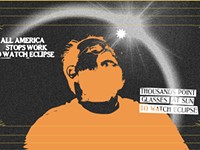
Man shakes fist at sun
Mar 15, 2024 -

Finger Lakes in a can, by way of Hollywood
Feb 13, 2024 - More »
